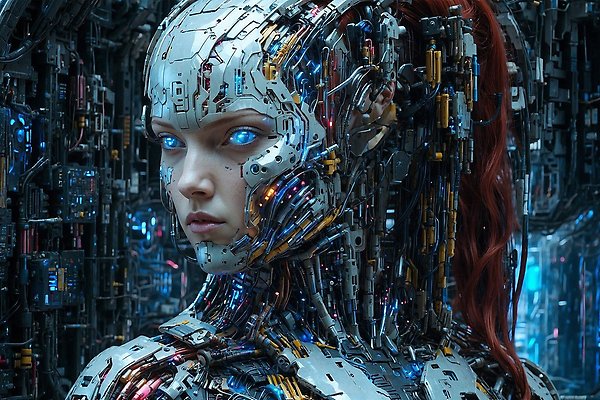Gender, Hybrid Identities, and Exoskeletons: The Armed Forces
The aim of this project is to research how gender and embodiment are manifested in and through exoskeletons in the military sector.
Exoskeletons are wearable robotic devices that can enhance the bodily capacities of their users. The user can either be equipped with an exoskeleton that covers the entire body or just specific body parts (i.e., upper body, lower body, hands), depending on the intention of the use. These wearable robotic devices are either active (battery dependent) or passive (no battery). The main fields of application include healthcare, industrial and armed forces.

Pixabay (AI-generated picture)
This project explores questions related to meanings, intentions and functions of exoskeletons, with a special focus on how gender operates and is manifested in and through exoskeleton design, construction and development. These questions are particularly interesting when it comes to the development of exoskeletons within the armed forces as very little research looks at the gendered aspects in this area.
The project looks at the current state-of-the-art development process, how producers and developers construct exoskeletons and how (prospective) users of exoskeletons within the armed forces consider the design and development for usability and in connection to their own identity construction. Researchers who conduct studies on exoskeletons are also included in this study to gain an additional academic perspective. Guidelines, regulations and standards on ethics and the use of exoskeletons and military technology are also analysed, with a core focus on gender, gender identity and embodiment.
Methodology
The project uses qualitative methods, such as Critical Visual Analysis; Critical Discourse Analysis; and Ethnography.
The theoretical approaches are based on Feminist New Materialism; Masculinity Studies; and Posthuman Feminism.

Pixabay (AI-genererad bild)
Research questions
Overall research question:
How is gender manifested in the construction and development of exoskeletons in the context of the armed forces?
Sub-research questions:
- How is gender represented in the information and advertisement material by companies that develop and produce exoskeletons for military purposes?
- How are gender aspects considered in the design and construction of exoskeletons?
- How do the identities of exoskeleton end-users influence gender performances?
Contact
- Do you want to know more about this research project? Contact Vanessa Noack, PhD student at the Centre for Gender Research.
- Vanessa Noack
